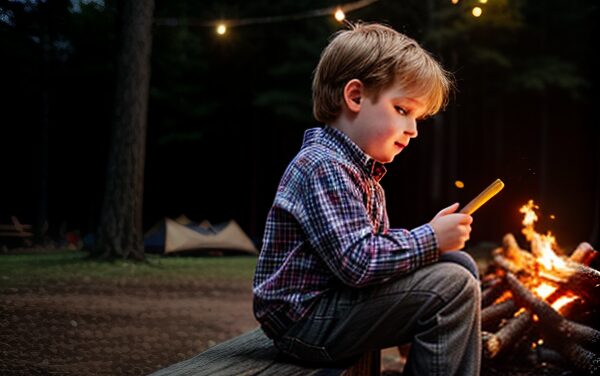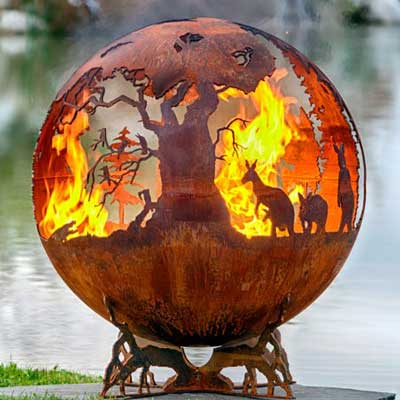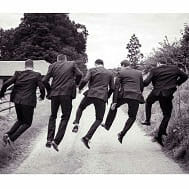Survival skills aren’t just for adventurers and scouts. Knowing how to handle emergencies can make a big difference for children. These skills give kids the confidence to face unexpected situations, whether they’re on a family camping trip or navigating the urban jungle.
The Importance of Survival Skills for Kids
Think about how unpredictable life can be. One moment you’re enjoying a hike, the next you could be separated from your group. Teaching kids survival skills isn’t about expecting the worst but preparing for it. It’s about giving them tools to stay safe and make smart decisions. They’ll understand how to avoid dangers and react appropriately if something goes wrong. Plus, it fosters independence and self-reliance.
A Brief Overview of Essential Survival Skills
From first aid to finding food, survival skills cover a wide range of topics. Kids should learn basic first aid, like treating cuts and burns, as well as CPR. Navigational skills, such as reading maps and using a compass, are crucial. Knowing how to build a shelter and find safe food and water in the wilderness can be lifesaving. And let’s not forget the importance of staying calm and mentally strong during emergencies. These basics lay a strong foundation for more advanced skills.
How Survival Training Empowers Children
Survival training isn’t just about the practical aspects. It’s also about mental growth. Kids become more resilient and adaptable. They learn problem-solving skills and how to stay calm under pressure. This kind of training builds a solid sense of confidence. It helps kids realize they have the capacity to take care of themselves and others, not just in survival scenarios but in everyday life.
Basic First Aid Training
Kids often find themselves in situations where a little first aid knowledge can go a long way. One of the first things they should learn is how to recognize and treat common injuries. Cuts, scrapes, and minor burns are all too familiar playground mishaps, but knowing how to clean and dress a wound properly can prevent infections and complications.
Putting together a basic first aid kit is another important step. Include bandages, antiseptic wipes, adhesive tape, and a few other essentials. Kids should know what each item in the kit is for and how to use it. This not only helps in emergencies but also teaches responsibility and preparedness.
CPR can be a lifesaver, literally. While CPR certification might be a bit much for the younger ones, having an understanding of the basics is beneficial. Knowing how to correctly perform chest compressions and mouth-to-mouth resuscitation can make a huge difference until professional help arrives.
Kids should also learn to stay calm during medical emergencies. Panicking can make things worse. Encourage them to take deep breaths and think through their steps methodically. Practice different scenarios with them, so they become more comfortable and confident in their abilities to handle real-life situations.
Navigational Skills and Outdoor Safety
Kids naturally have a keen sense of adventure, but getting lost can turn a fun outing into a scary situation. Reading maps and using a compass are essential skills. Teach kids to understand map symbols and practice plotting routes. Begin with simple, familiar areas and gradually move to more complex terrains as they gain confidence.
Recognizing natural landmarks is also crucial. Big rocks, unusual trees, and bodies of water can all serve as reference points. This helps kids orient themselves if they ever lose track of a trail. Encourage them to always make a mental note of their surroundings and look back frequently to understand the path they’ve taken.
Staying safe outdoors means understanding different terrains. Forests, mountains, and urban areas each have unique challenges. In forests, knowing which plants are safe to touch and which are poisonous can prevent accidents. Mountains call for sturdy footwear and awareness of unstable ground. Urban survival might mean understanding traffic patterns and recognizing safe spaces. Tailor the training to the environment they’re most likely to encounter.
Discuss with kids the importance of the buddy system. Whether they are on a hiking trip or just playing in the park, having a buddy ensures that someone can help or get help if something goes wrong. Reinforce the importance of sticking together and communicating regularly with their buddy.
Emergency signals are another important aspect of navigational skills. Show kids how to use a whistle or shout specific words to alert others in case they need help. Fire and smoke signals can also be effective but should be taught with strict safety guidelines in mind.
Building Shelters and Finding Food
When kids are out in nature, knowing how to build a shelter can be a game-changer. Simple and effective shelters protect from the elements and help kids stay safe if they need to spend an unexpected night outdoors. Start by teaching them how to use natural materials like branches, leaves, and rocks to create a stable structure. Lean-tos, teepees, and debris huts are some basic designs that are easy to learn and build.
Finding food is another critical skill. Kids should learn to identify edible plants and know which ones to avoid. Take them on nature walks and point out common edible plants in your area. But, emphasize that they should never eat anything unless they are absolutely sure it’s safe. Teaching them how to find and purify water is just as important. Simple methods like using water purification tablets or boiling water can prevent them from getting sick.
Fishing and trapping are more advanced skills but can be very useful. Show kids basic techniques for catching fish, like using simple fishing lines or traps. For urban areas, learning how to forage for food in a safe and responsible way can also be valuable. Always stress the importance of respecting nature and not taking more than they need.
Cooking food safely is another essential part of survival training. Teach kids how to start a fire safely, using matches or a lighter, and the importance of containing the fire to prevent wildfires. Show them how to cook food thoroughly to avoid illnesses. Even simple skills like roasting marshmallows can be fun practice and build confidence in more serious cooking methods.
Finally, emphasize the importance of staying put if they get lost. Wandering around can lead to more confusion and danger. Building a shelter and staying in one place increases the chances of being found quickly by rescuers. Reinforce that the best thing they can do is to remain calm, use their skills, and wait for help to arrive.

Safety With Lighting Fires
One of the skills many fathers teach their children is the lighting of an outdoor fire pit. Standing around a fire on a chilly night with mates is something many of us will never give up. There’s a camaraderie that comes with enjoying a beer or two around the warmth generated from a fire.
Learning to light a fire as a young man in a safe environment, provided the necessary skills that you can take on survival or camping trips. Unfortunately, today’s children lose these life skills as they’re mostly sitting on their rear end, playing PS4, X-Box or watching YouTube videos on their iPad.
We need to take a breath, and admit that the gadgets aren’t going to disappear any time soon. So we need to limit the kids usage, and make specific times for learning these essential skills. It’s possible that kids will be required to fend for themselves if they’re in a serious situation. They won’t just be able to ‘Google’ themselves of trouble!
Fire is a curiosity for children, so before they attempt to start one themselves, teach them the safest method and display all the hazards that can be dangerous. Even then, don’t let a child start a fire without a parent around. I’d also suggest reading up on fire safety here.
Emergency Preparedness and Mental Resilience
Emergencies can be intimidating, but staying calm and focused makes a huge difference. Teaching kids techniques to manage stress and anxiety can help them remain clear-headed during a crisis. Simple breathing exercises, counting, or repeating a mantra can aid in maintaining composure.
Developing mental and emotional resilience is just as critical as physical skills. Encourage kids to embrace challenges and learn from mistakes. This kind of mindset prepares them to handle emergencies more effectively. Role-playing different scenarios can be an engaging way to build this resilience. It gives them a chance to practice their skills in a controlled, safe environment, making them more adaptable when real situations arise.
Creating and practicing emergency plans at home and school is another key aspect. Kids should know what to do in various situations, such as a fire, earthquake, or severe weather. Establishing a family meeting point, knowing how to dial emergency services, and understanding basic evacuation plans are all part of thorough preparation.
Communication is often overlooked but vitally important. Teach kids how to communicate their needs and location if they find themselves in an emergency. Simple things like carrying a whistle or knowing how to send an SOS signal can be incredibly useful.
Finally, make sure kids understand the importance of teamwork and relying on others in times of need. While self-reliance is crucial, knowing when and how to ask for help is equally important. Encourage them to look out for their peers and work together to solve problems. Building a community of trust and support can be a lifeline in emergencies.
You can check out loads more of our fire pits, on the Fire Pit page.
Along with fire pits, learning how to start outdoor patio heaters is another useful proficiency. Not all outdoor patio heaters are the same so you’ll firstly need to read the instructions carefully before parting your knowledge onto your child.
Once your kids become teenagers, they’ll be starting these outdoor heaters themselves. Giving them the confidence and encouragement to know how to do this safely will hold them in good stead.
Fire safely is critical, and can be a rewarding skill to pass onto your children. Don’t let them try to do it alone, or even with other young children. They need to be supervised and taught correctly. For more information on fire pit safety for children, check out this air-n-water article.











